What Are Foreigners Watching When They See the V-Day Parade?

The grand military parade commemorating the 80th anniversary of the victory in the Chinese People’s War of Resistance Against Japanese Aggression and the World Anti-Fascist War was held yesterday. As the old saying goes, “The great affairs of a state lie in sacrifices and warfare,” and in times of peace, the military parade perfectly combines these two elements. As one of the most globally watched events today, Lawtee has come across many interesting comments from foreigners while browsing the internet and would like to share some of them briefly.
How Russians View the V-Day Parade
On several tech forums where Lawtee frequently hangs out, discussions about China’s military parade have been popping up. One of the most typical comments is: “See, China really hasn’t supplied weapons to Russia, or the war situation would have been rewritten long ago.” Seeing such comments across multiple platforms left Lawtee puzzled. It seems that, compared to the “China threat theory” heavily promoted by Western media over the years, the fear of Russia among the Western public is deeply ingrained.
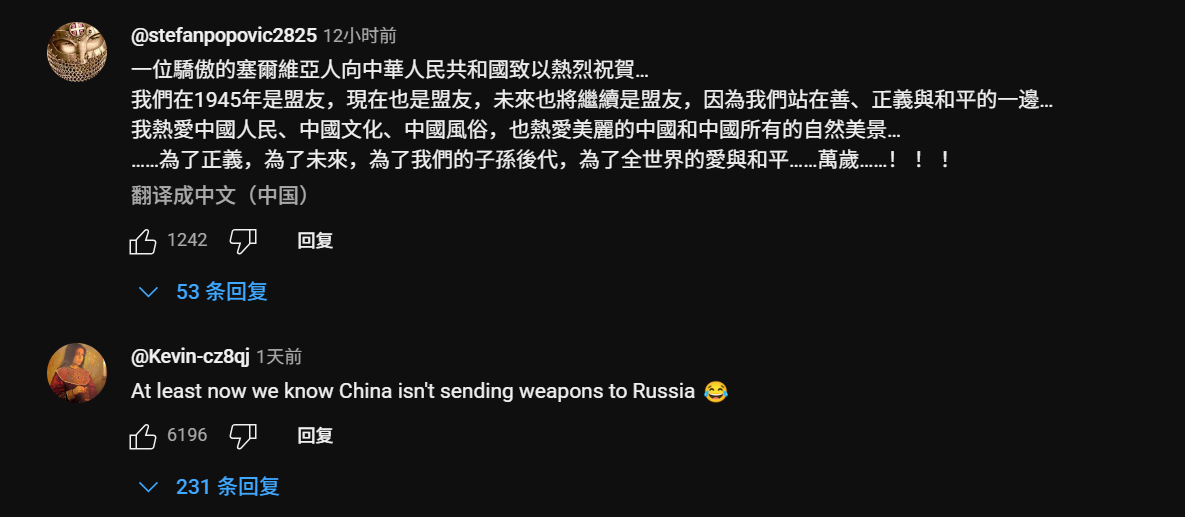
Having lived through China’s industrial modernization, our generation is well aware of the country’s manufacturing capabilities. Even from a basic materialist perspective, it’s clear that a country with a permanent population and GDP smaller than Guangdong’s is significantly lagging behind China in manufacturing.
However, due to long-term media bias, the Western public still holds considerable misconceptions about China’s capabilities. To some extent, this parade helps correct those misconceptions.
In the process, Lawtee became curious about how Russians, as the other party in such comments, view China’s military parade.
Lawtee enlisted the help of Russian-speaking friends and scoured Russia’s two major social platforms, VK.com and Pikabu.ru, to understand the reactions of ordinary Russian netizens.
- The “Astonished” Tech Enthusiasts
Key comments include: “Stunning scale! Top-tier technology!” “Perfect goose-stepping, equipment straight out of a sci-fi movie” “Robotic dogs and nuclear missiles? China is ready for anything” “Underwater drones and robots are the future of warfare; China is leading in AI weapons” “New tanks with hypersonic missiles… Has NATO thought about who they’re up against?”
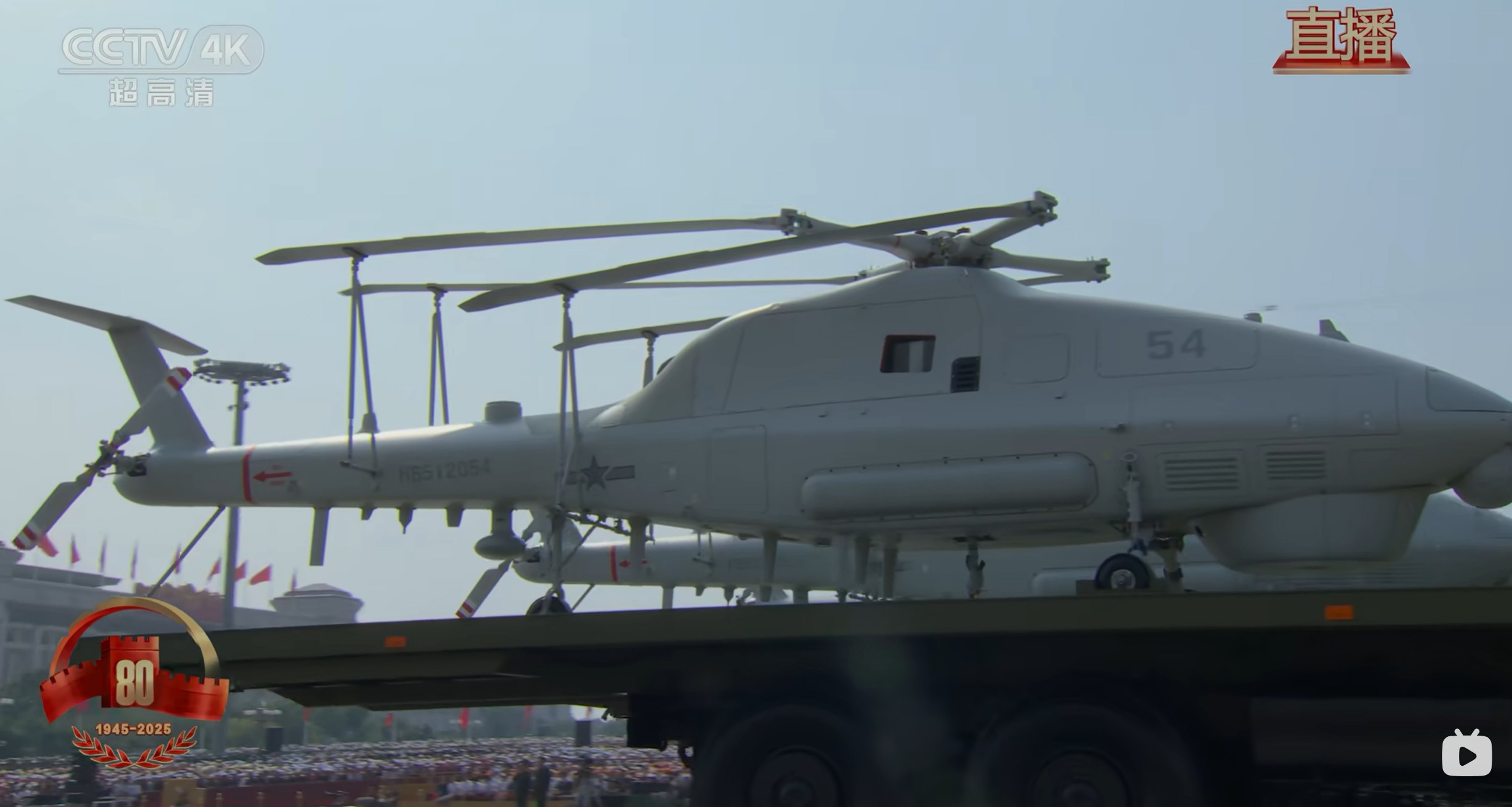
In Old T’s view, these reactions are quite grounded. We’re used to seeing announcements of new equipment “launched like dumplings into water,” but for Russians, the hardware displayed in this parade—especially hypersonic tech, drones, and AI—has genuinely refreshed their perspective, even evoking some envy. After all, many Russians work in the defense sector and can easily discern the sophistication. Their “sci-fi movie” remark resonates with our online phrase “too advanced to display,” indicating that China’s technological advancements have truly impressed its northern neighbor.
- The Geopolitical Theorists
Key comments include: “The leaders of China, Russia, and North Korea sharing the stage—this is a signal to the West!” “China showcasing nuclear power is a declaration of leadership; Trump must be furious” “The world is changing; the U.S.-centric era is ending, which is good for us Russians” “This is an anti-Western alliance!” “China is undeterrable; this is a warning to the world” “Will Russia become China’s outpost? Putin looked like a bystander at the parade…”
This part is quite intriguing. Many Russian netizens interpret the three leaders’ appearance as an “anti-U.S. united front,” believing that China and Russia banding together against the West is beneficial. They relish the idea of a “changing world order” and see weakening the U.S. as a positive. However, some worry: With China’s immense and openly displayed strength, might Russia gradually shift from “ally” to “junior partner” or “outpost”? This ambivalence—wanting to benefit from the alliance while fearing being overshadowed—is quite evident.
In reality, China’s parade primarily focuses on its own development and historical commemoration; showcasing strength is a natural outcome of national progress. Interpretations of an “anti-alliance” are largely external projections. As for Russia’s position, that depends on its own path.
- The Onlookers and Jokesters
Key comments include: “Is Jackie Chan there? I want to see an action scene at Tiananmen!” “If Trump saw this, he’d definitely organize a parade with ads!” “Chinese military drills look like sci-fi movies—impressive, but how about real combat? (citing Russian military experience)” “Watched the three-hour live stream! This girl’s rehearsal clips were so touching.”
Honestly, netizens worldwide share similar traits: spectating, enjoying the spectacle, and memeing are the norm. Teasing Trump (a global superstar), mentioning Jackie Chan, or even questioning the “combat readiness” of parade troops based on Russia’s underwhelming experience in Ukraine are all natural reactions. Some are moved by the grand spectacle or specific details. Like Old T, who remains in awe of the seamless movements of soldiers jumping into vehicles during the parade—a universal aspect of “human spectator behavior.” This shows that beyond the hardcore display, the parade successfully captures attention and evokes emotional resonance.
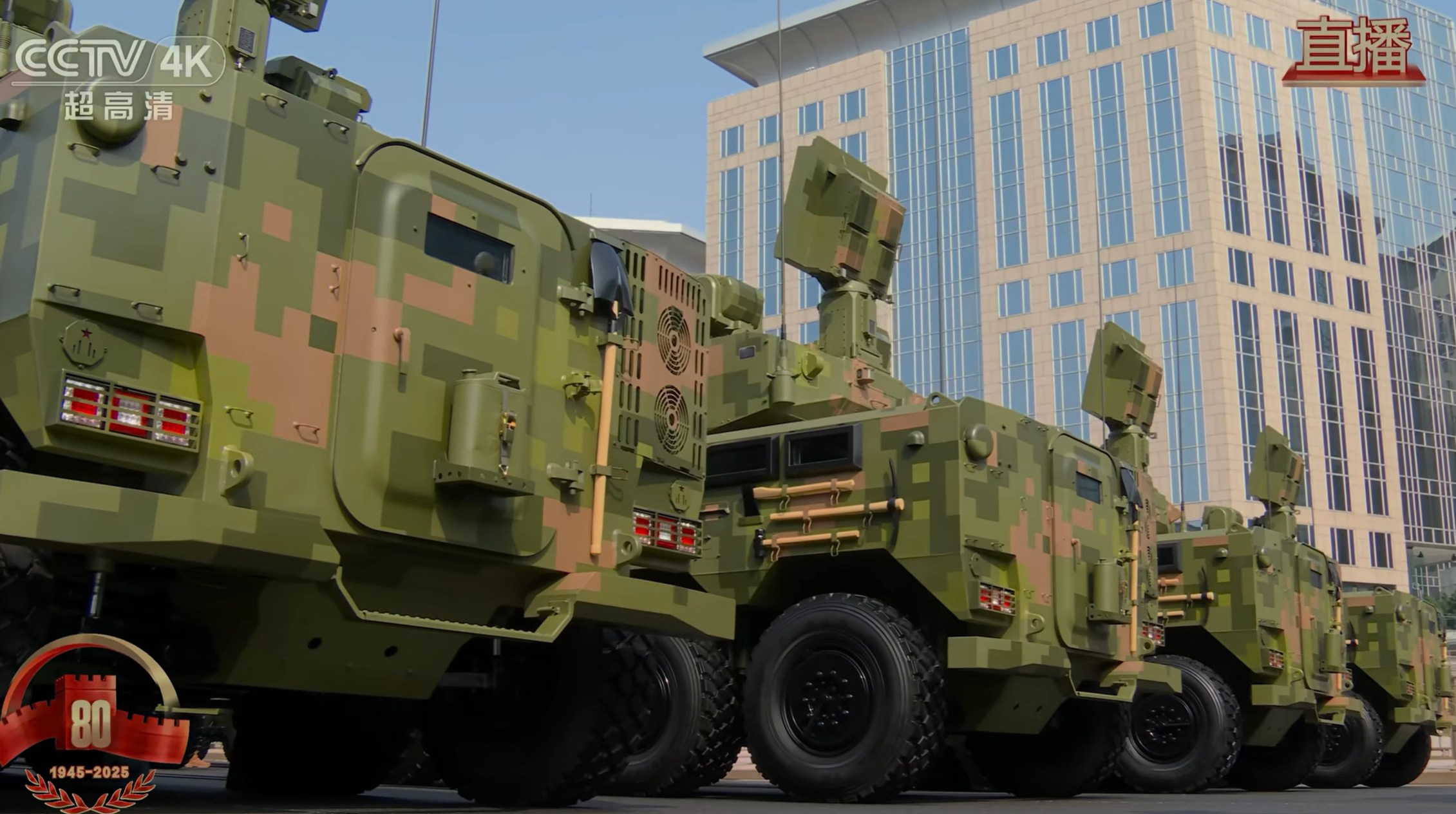
How Americans View the V-Day Parade
After discussing Russia, it’s essential to mention the U.S. While watching the live stream, Lawtee felt that a key objective of showcasing so many new systems was to send a clear message to America. For instance, displaying the DF-5C in three segments seemed tailored to ensure even Trump’s informal team could grasp its significance.
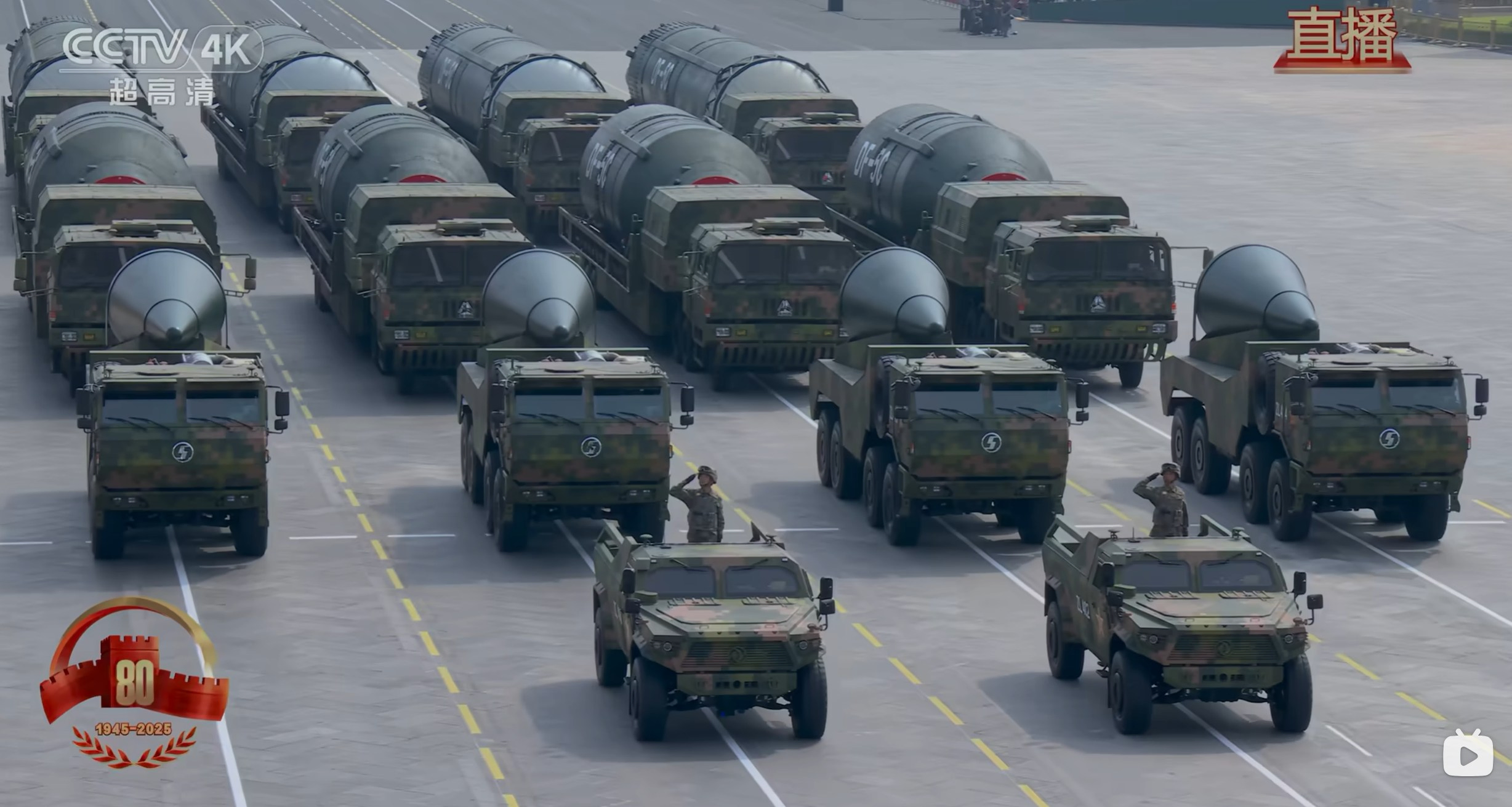
Lawtee tried to compile comments from American forums, Quora analogs, and various tech sites. Overall, the responses from the U.S. side were wildly divergent—some were surprisingly objective and technical, others were humorous, and some were hysterical. This polarization might reflect the deep divisions within American society.
1. The Stunned Military Enthusiasts
> “China’s parade is a textbook display of discipline and coordination that the U.S. military can’t match” (Former U.S. Navy instructor)
> “A formation of 350 people! We struggle with 48—how do they do it?” (U.S. veteran)
> “Drones + robotic dogs + hypersonic missiles—this equipment looks ripped from a sci-fi movie!” (U.S. military enthusiast)
Lawtee paid close attention to American military enthusiasts’ reactions. As a longstanding imperial power frequently engaged in conflicts, the U.S. has a large and traditionally professional-minded military fanbase.
This time, what most shocked the American military community was the debut of China’s full suite of anti-submarine warfare (ASW) black technology. What the U.S. military long considered its “ultimate trump card”—nuclear submarines—became the “primary target” of the parade:
- “Deep-sea assassin” unmanned submarines: Capable of stealthily approaching U.S. subs to deploy torpedoes; some lamented, “This is crazier than Hollywood’s The Hunt for Red October!”
- “Aerial hunter” anti-submarine drones: Deploying sonobuoys like scattered petals; posts热议: “Drones are doing the P-8 Poseidon’s job at a fraction of the cost?”
- Smart mines + rocket-assisted torpedo family: Smart mines were dubbed the “undersea minefield,” while rocket-assisted torpedoes were interpreted as “specifically designed to counter high-speed escapes by U.S. submarines.”
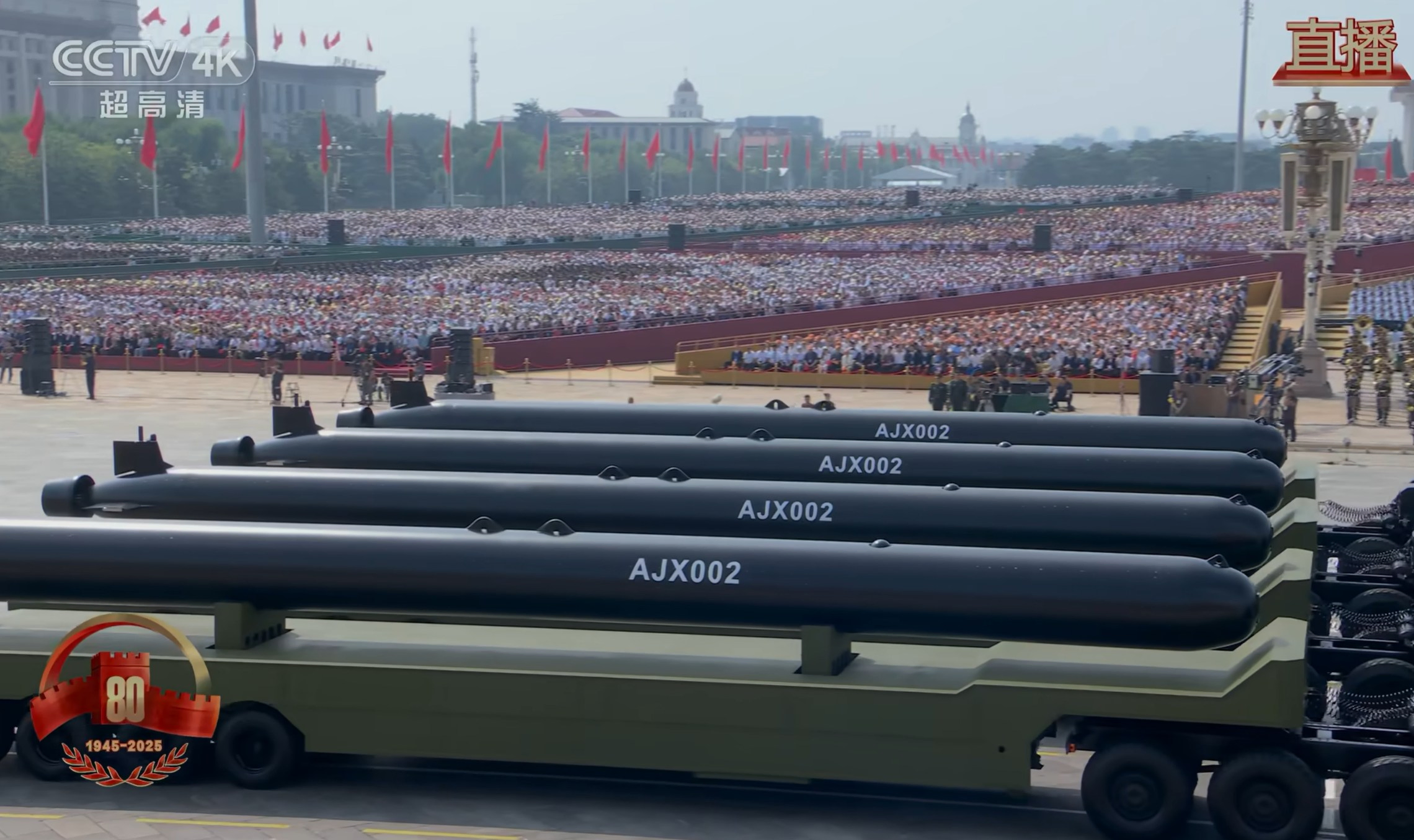
Lawtee thinks these American military enthusiasts are quite knowledgeable but also genuinely rattled—“Now Virginia-class subs have to evade drones, unmanned vessels, smart mines, AND air-dropped torpedoes?!” However, some remained defiant: “It’s all PowerPoint until proven in combat!”
Just a month ago, Lawtee eagerly watched the Hollywood blockbuster Mission: Impossible 8. In the film, Tom Cruise obtains command of a carrier fleet from a fictional Black female president and jumps from an Osprey helicopter to infiltrate a Virginia-class submarine. The technological portrayal of the sub certainly refreshed Old T’s perception of these underwater behemoths.
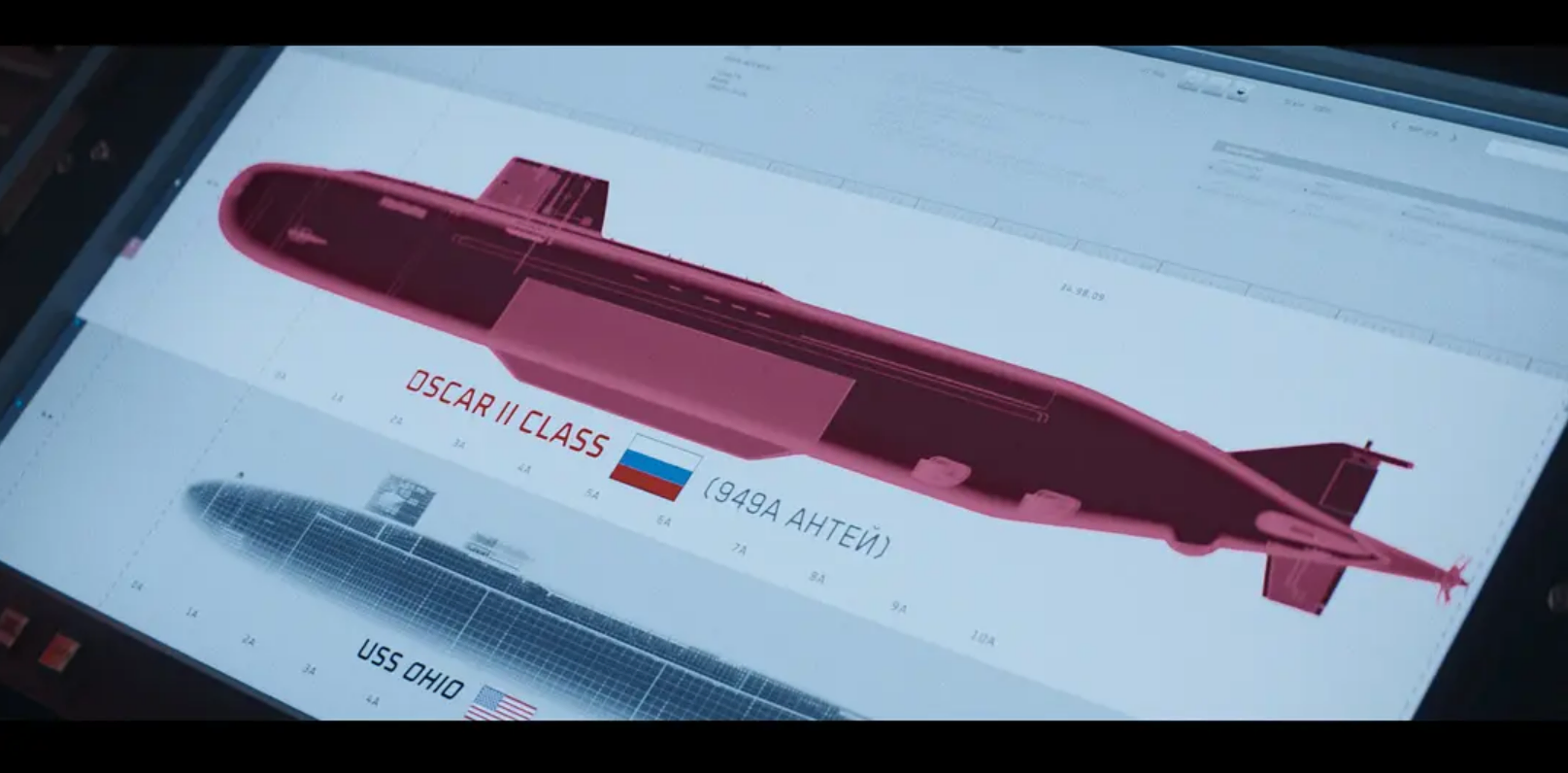
Realistically, nuclear submarines represent America’s last bastion of reliance. The U.S. military likely realized long ago that its land and surface assets had lost their advantage in the Western Pacific, China’s backyard—hence why carrier groups often retreat upon encountering Type 055 destroyers.
But the U.S. might have clung to the illusion that its advanced nuclear submarines remained secure underwater. The concentrated display of this triad of submarine-killing systems in the V-Day parade caught them off guard, likely prompting urgent late-night meetings at the Pentagon.
2. The “China Threat” Camp
> “The DF-5C’s global range is a death warning to America!”
> “An anti-U.S. alliance is forming; World War III countdown has begun” (Conspiracy theorist)
> “Guam base? DF-26D has it targeted! Deep-sea fortress? China’s ASW net is deployed!”
This group largely echoes the Western media’s inconsistent narrative—oscillating between “China’s collapse” and the “China threat,” rarely coherent. Seeing China’s advanced hardware seems to shatter their mental defenses. The most amusing part was people frantically tagging Trump: “He’s definitely planning an even more extravagant parade overnight!” (Trump indeed posted an all-caps tweet ranting about a “Chinese conspiracy” 😂). However, some sober voices countered: “China hasn’t fought a war in 40 years; the U.S. dropped 500,000 bombs in the same period. Who’s the real disruptor of peace?”
3. The Entertainment-First Crowd
> “China-U.S. parade comparison: China looks like a Starfleet, the U.S. like drunkards after a rave”
> “If China and the U.S. ordered pizza simultaneously, Chinese missiles would reach your home before the pizza”
> “Trump wanted a birthday parade; China gave him the ultimate version”
> “U.S. subs used to be deep-sea werewolves; now Chinese drones are seers, unmanned vessels are hunters, smart mines are witches—the werewolf is out first night!”
> “The Pentagon should pay China—they’re saving the U.S. military budget!”
American netizens don’t hold back when roasting themselves! Their own parades are mocked as “Disney parades,” with some quipping, “British museums should return looted Chinese artifacts, or the DF Express might deliver them personally.” Behind this deconstructive humor lies a subtle recognition of the shifting power dynamics. As one highly upvoted comment noted: “China once had iron will but no steel; now China has steel, and it’s your turn to cultivate the will!”
Indeed, Americans watching China’s parade resemble spectators at a reality show—simultaneously amazed, wary, and using humor to diffuse anxiety.
While Russians debate “who leads in Sino-Russian relations,” Americans grapple with “whether China’s rise equals America’s decline.”
Yet, all these voices affirm the parade’s core significance: commemorating to honor heroes, displaying strength to deter war and uphold peace. As for whether U.S. nuclear submarines can sleep soundly? Perhaps heed the CCTV host’s words during the DF-5C reveal: “Range covers the globe, but specific parameters… are ’too advanced to display’ 😉.”
Global Spectacle: Views from Other Countries’ Netizens
While reviewing American netizens’ comments, Lawtee faced a challenge: many platforms are global, making it hard to distinguish commenters’ nationalities. However, many users identify themselves or post in other languages, allowing for some identification. Here’s a summary of typical viewpoints.
Overall, if American and Russian comments carry “adversary filters” and “ally baggage,” netizens from other countries react more purely. Some watch it as a sci-fi blockbuster, others as a history lesson, and some quietly take notes. After reviewing thousands of comments, Lawtee found these four categories most representative:
1. Collective Resonance from Developing Countries
> “China proves one thing: a once-colonized nation can rise to become a powerhouse!” (Vietnam @vietnamesebeauties)
> “Western media always talks about the China threat, but when China builds our railways, the West only sends bills” (Kenya @meja2546)
> “After watching the parade, I started learning Chinese immediately—the future is China’s game” (Indonesia @mohamedaminali6594)
> “The U.S. drops bombs in Iraq; China builds power plants there—who’s the real friend?” (Iran @haamedkasmaei3999)
> “Brazil was spied on by the U.S. for a decade; China launched satellites for us!” (Brazil @leoncioco3305)
As the Tiananmen rostrum proclaims, “Long live the great unity of the world’s peoples!” The broader Third World response to the parade has been largely positive and commendatory.
However, while reading these comments, Lawtee also sensed frustration—many clearly expressed long-standing grievances against U.S. dominance.
For many in the Third World, this V-Day parade resembles a satisfying narrative: the once-oppressed underdog now stands strong with advanced capabilities to support others.
Especially when Filipino netizen @Axel-t1q9 self-deprecatingly remarked, “We suffered under Japan but still cozy up to the U.S. and Japan,” it evoked a complex mix of disappointment and empathy.
2. Collective Condemnation from Countries Invaded by Japan
> “Japan still denies the Nanjing Massacre, yet some criticize China’s parade as ‘muscle-flexing’?” (South Korea @문재인-i6p)
> “My grandfather was forced by Japanese troops to build the ‘Death Railway’; China’s parade speaks for us too” (Thailand @dimsimbogan.)
> “The West only commemorates D-Day; who remembers 20 million deaths in Asia?” (Highly upvoted Vietnamese comment)
> “When my grandmother was bayoneted by Japanese soldiers, the U.S. hadn’t even entered the war. Why is China’s anti-Japanese war being erased?” (Malaysian Chinese @dangoh2237)
This parade’s theme commemorates China’s victory in the War of Resistance, a issue that resonates deeply across Asia.
When Western media hypes the “China threat theory,” South Korean netizens retort with images of Seoul’s “comfort woman” statue: “China is commemorating all Asian victims!”
Lawtee found the most poignant question from Cambodian netizen @nuomitang30: “If China displaying strength is a threat, what is Japan hiding its crimes?”
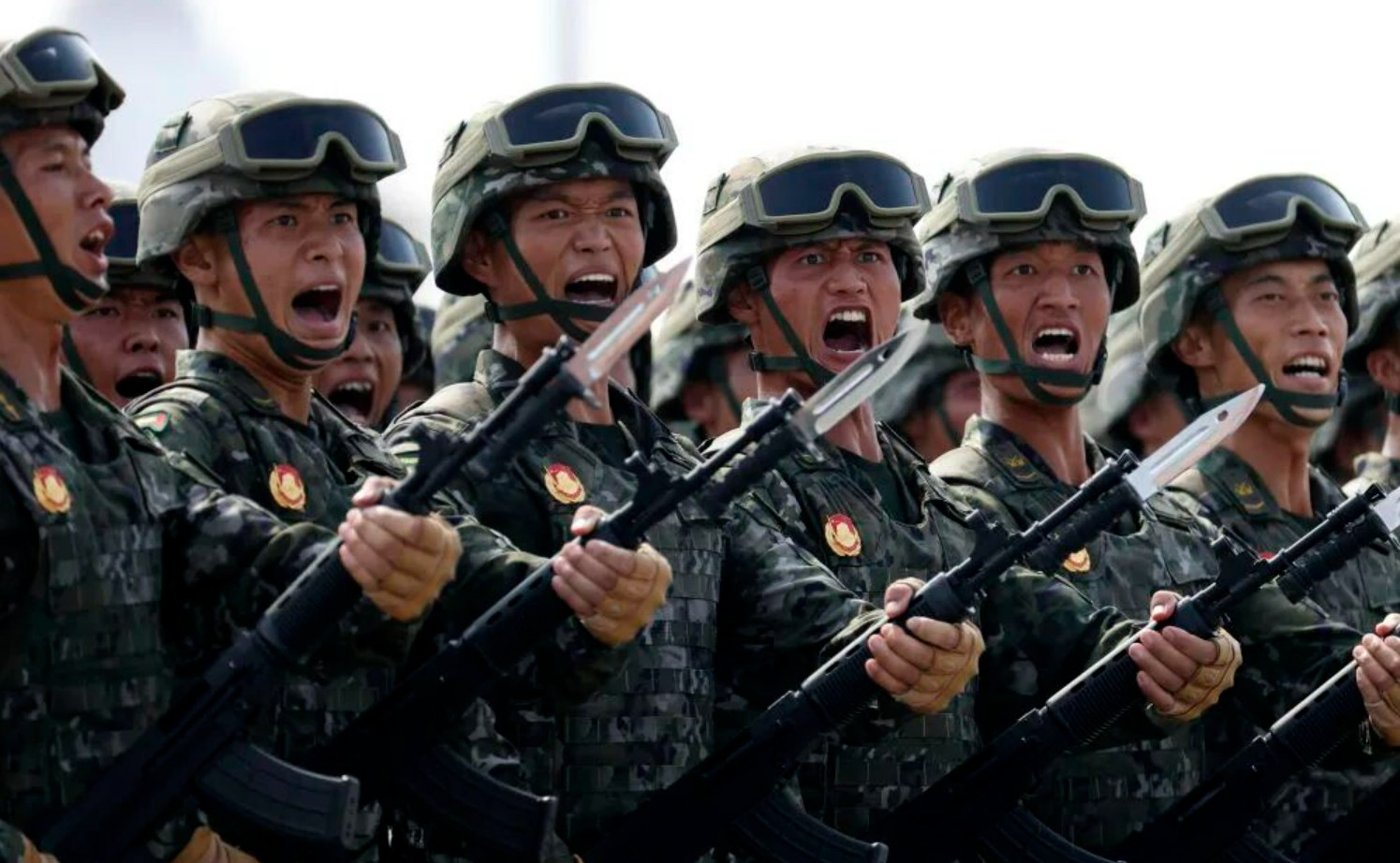
3. The European Professional Spectators
> “A 350-person formation with less than 0.1-second error—this triggers German DNA!” (Germany @jonaswiegandt3829)
> “British museums should return China’s artifacts, or will the next parade formation march to London?” (UK @nistelooyv7847)
> “The parade’s precision looks AI-generated… Oh wait, it’s real?!” (French netizen’s subtle jab)
> “No matter how dazzling China’s float show is, it doesn’t change that I’m a free citizen” (A sarcastic Swedish netizen)
Europe is a hub for seasoned commentators who masterfully employ “double standards”: praising China’s discipline like engineers, then switching to moralistic mode when values are mentioned.
However, there are also unexpectedly positive moments, particularly from Eastern European comments in Serbia, Bulgaria, and Hungary.
Some even used translation software to post praises in Chinese. One of the earlier screenshots in this article shows a highly upvoted Serbian comment. Interestingly, they might not distinguish between Simplified and Traditional Chinese, as the translation used Traditional characters.
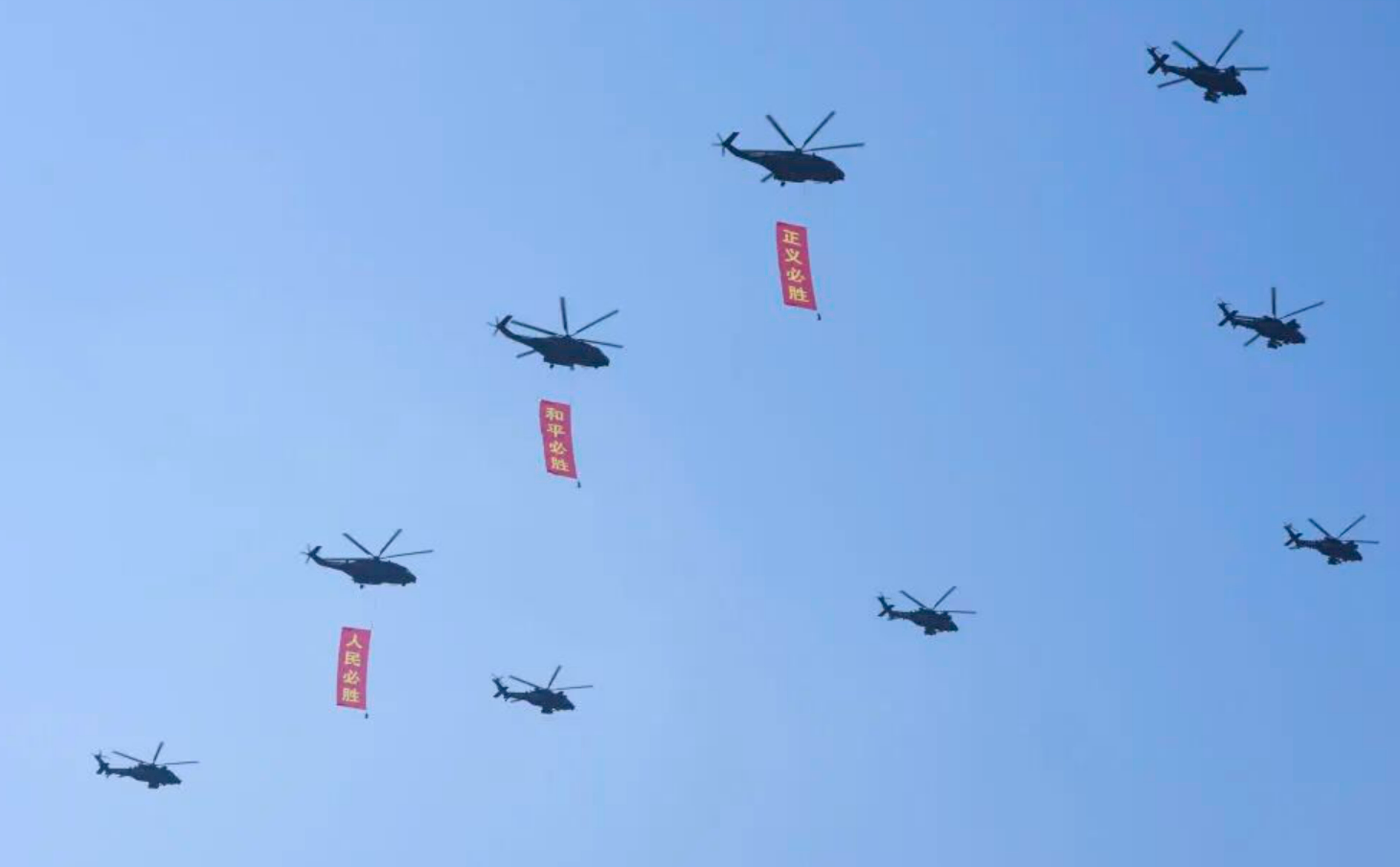
4. India and Pakistan Always Stand Out
> “China-Pakistan friendship is higher than the Himalayas! Deeper than the Indian Ocean!” (@pakistanime9793)
> “India buys French Rafales? The J-10C in Pakistan achieved perfect scores in drills!” (@Maxwell-t3o — note: comments clarified the J-10s in the parade were display aircraft releasing colored smoke)
> “Let’s admit it! Our parades feature motorcycle pyramids; China’s feature synchronized marching” (@DE_EZY)
> “Fearing China is real, but Shanghai’s subway is cleaner than New Delhi’s is also real” (@Aarohanbaru_goku)
Modi’s recent visit to Tianjin for meetings was a gesture of goodwill toward China. Unfortunately, he did not attend the parade. Realistically, Sino-Indian relations are unlikely to improve drastically anytime soon.
Indian netizens’ comments are typically all over the place—some dismiss “Chinese weapons lacking combat proof” while asking “how to achieve such precision.” Pakistani netizens, meanwhile, flood comments with ❤️🇨🇳.
Interestingly, when comments touch on the U.S., Indian and Pakistani netizens rarely find common ground: “The U.S. provokes Sino-Indian relations to profit from the discord—most despicable!”
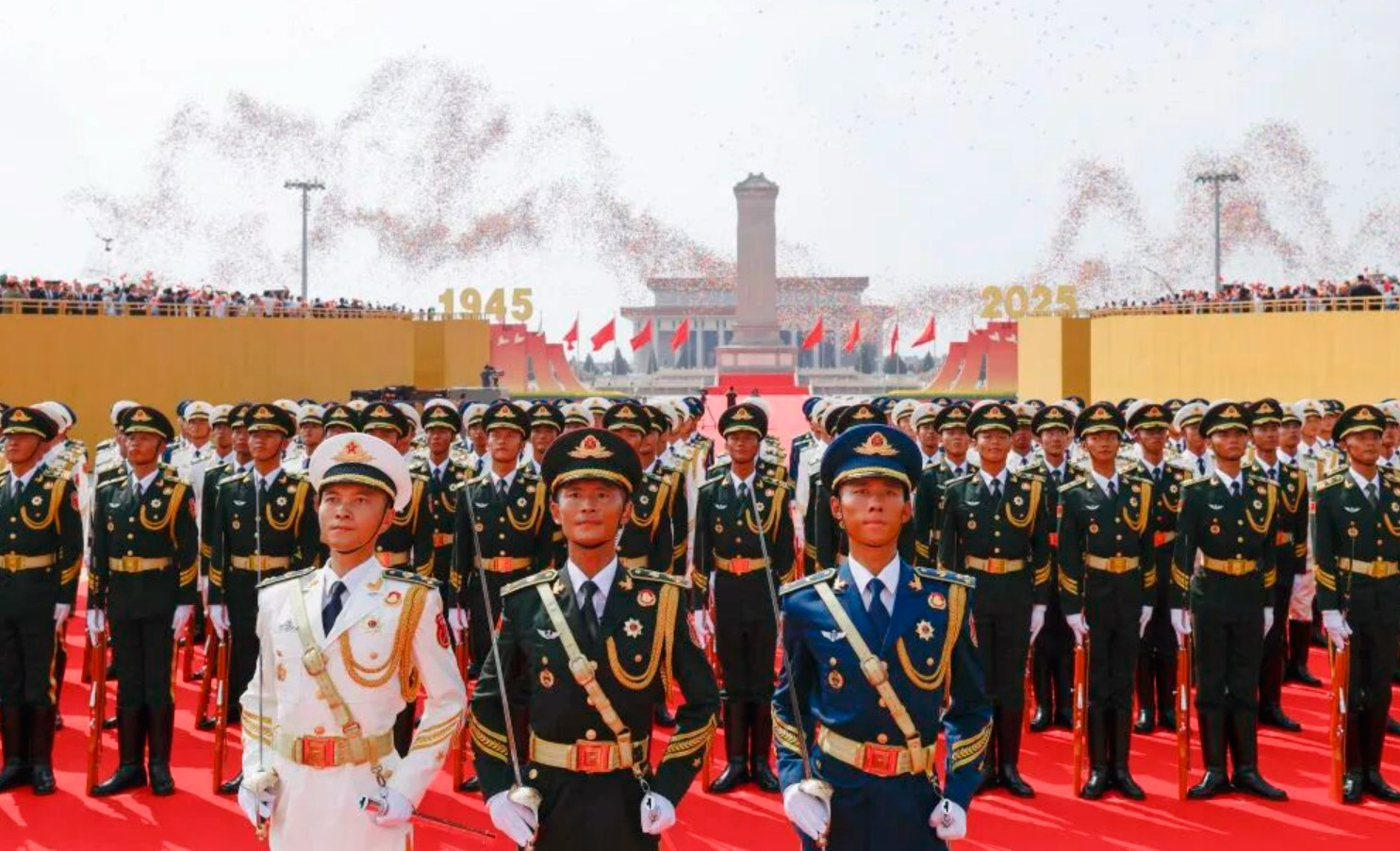
Summary
This 93rd military parade is, in Old T’s overall feeling, a landmark event of profound historical significance. After reading comments from netizens around the world, I deeply felt the pride brought by the nation’s progress and prosperity.
From 1945 to 2025, China has truly endured an incredibly challenging 80 years.
The moment when representatives of WWII veterans on the rostrum shook hands with leaders from various countries also moved Lawtee to tears.
Times have changed, and today’s China is no longer the China that was at the mercy of others for over a century after 1840.
As Cambodian netizen @FFuunnyymudP wrote, “China’s most awe-inspiring weapon is its ability to make the parade ground the final stop of the battlefield.”
Eighty years ago, we built the Great Wall with flesh and blood; eighty years later, we safeguard peace with formidable technology and military strength.
The resounding footsteps echoing through the skies are both a requiem to comfort the souls of heroes and a cease-fire letter to those who seek hegemony.